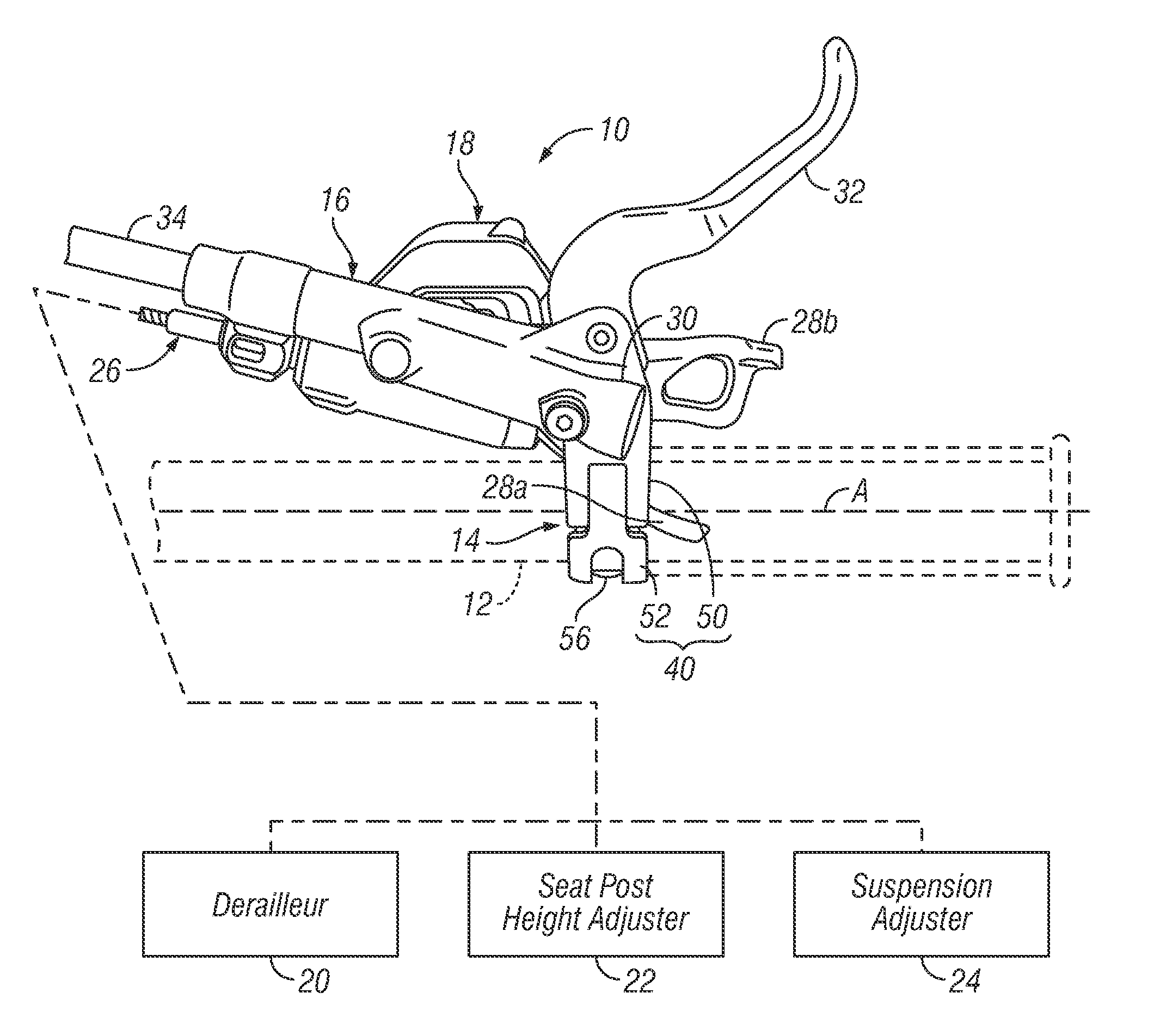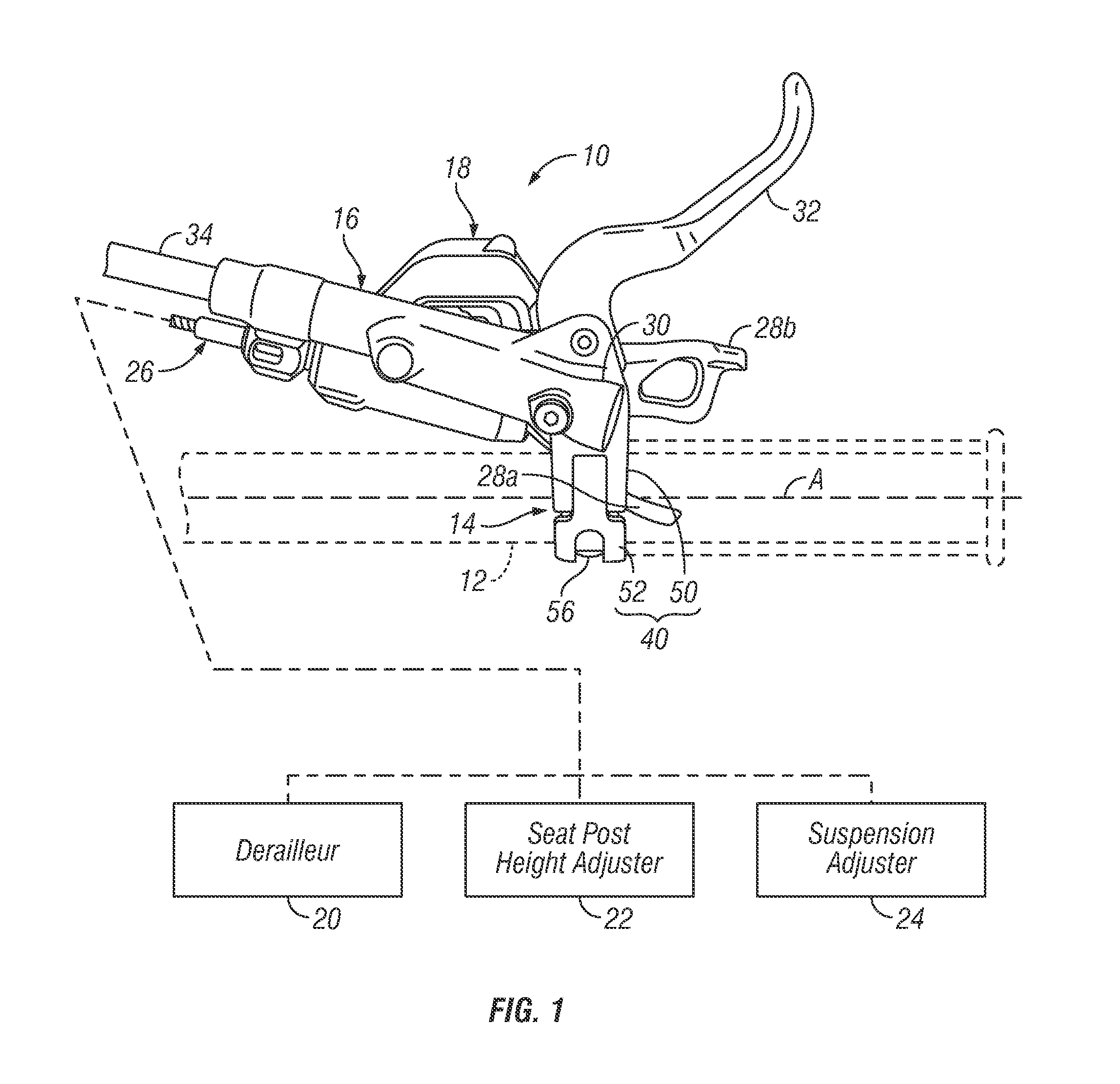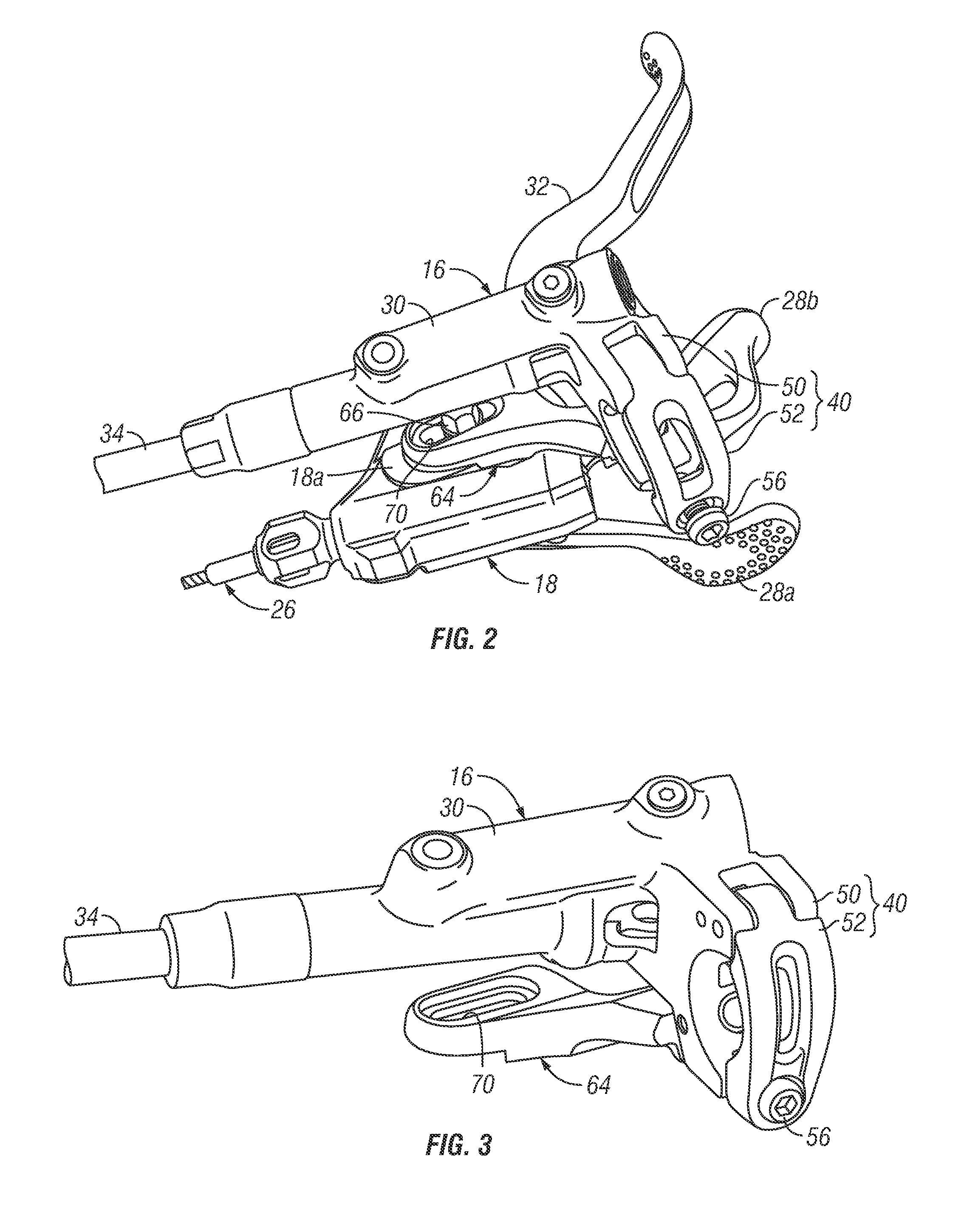Bicycle handlebar clamp assembly
- Summary
- Abstract
- Description
- Claims
- Application Information
AI Technical Summary
Benefits of technology
Problems solved by technology
Method used
Image
Examples
Embodiment Construction
[0025]Selected embodiments will now be explained with reference to the drawings. It will be apparent to those skilled in the art from this disclosure that the following descriptions of the embodiments are provided for illustration only and not for the purpose of limiting the invention as defined by the appended claims and their equivalents.
[0026]Referring initially to FIGS. 1 and 2, a bicycle component operating device 10 is illustrated that is attached to a handlebar 12 by a bicycle handlebar clamp assembly 14 in accordance with a first embodiment. Here in the first embodiment, the bicycle component operating device 10 includes a first operating component 16 and a second operating component 18. The first operating component 16 is illustrated in the form of a hydraulic brake operating (actuation) device. On the other hand, the second operating component 18 is illustrated in the form of a cable operating device.
[0027]As illustrated in FIG. 1, the first operating component 16 is integ...
PUM
 Login to View More
Login to View More Abstract
Description
Claims
Application Information
 Login to View More
Login to View More - R&D
- Intellectual Property
- Life Sciences
- Materials
- Tech Scout
- Unparalleled Data Quality
- Higher Quality Content
- 60% Fewer Hallucinations
Browse by: Latest US Patents, China's latest patents, Technical Efficacy Thesaurus, Application Domain, Technology Topic, Popular Technical Reports.
© 2025 PatSnap. All rights reserved.Legal|Privacy policy|Modern Slavery Act Transparency Statement|Sitemap|About US| Contact US: help@patsnap.com



